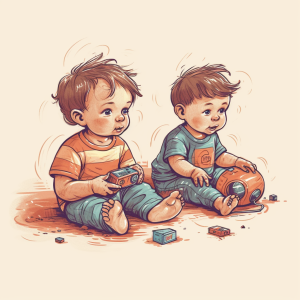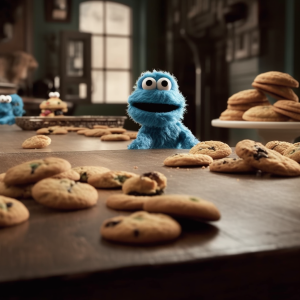
Swiss psychologist, Jean Piaget, drew such conclusions after conducting extensive experiments with children in the 1950’s. He was followed by scientists who, by and large, refined and afforded empirical evidence to his theory that young children are essentially trapped in a world of egocentricity, incapable of considering other perspectives and viewpoints.
However, Henrike Moll, Assistant Professor of Developmental Psychology in the University of Southern California, avers that researchers have, in more recent years, employed more sophisticated methods of assessing children’s responses to various stimuli. “Instead of engaging toddlers in 
Moll also referenced some Hungarian research that noted responses of six-month-old’s (!) that may indicate a capacity for empathy. The key was taking careful note of the precise length of time that the babies maintained eye-contact with a particular scene.
While not rejecting the essential model of the very gradual, other-awareness development that Piaget espoused, Moll believes that the more recent, fine-tuned studies do “reveal that there is much more going on in toddlers’ and even infants’ minds than was previously believed. With the explicit measures used by Piaget and successors, these deeper layers of kids’ understanding [could not] be accessed. The new investigative tools demonstrate that kids know more than they can say.”
Toddlers playing side-by-side – according to Moll’s theory – suggests there is indeed interaction going on between the tots, albeit in a different form than we grown-ups are used to.
That does make sense, doesn’t it? After all, if each tot has absolutely zero interest in the other who occupies his or her proximity, why would they bother to set themselves up like that? Clearly, there must be some level of awareness.
And, perhaps, even communication. Albeit in “baby language”.
In the research, the key to accessing this knowledge was by deciphering that baby language. To pick up on the very subtle nuances of baby behavior that can serve as windows into what the very young child may be thinking or feeling. Piaget seems to have been measuring children by an adult yardstick, which – according to Moll – necessarily falls short of the mark because it fails to “capitalize on behaviors that have a firm place in infants’ natural behavior repertoire.” Put otherwise: analyze and assess babies in their own language.

In a similar vein, halacha mandates that, as soon as a child begins to babble his first few words, he must be taught Torah tzivah lanu Moshe and Shema Yisrael. But what’s the point? He doesn’t understand a word, right? The Aruch Ha’Shulchan explains this halacha as follows: even though the child does not intellectually grasp what you are teaching him, it nevertheless embeds the fundamentals of emunah deep into his psyche.
Coming back to Moll’s work, in her article she notes that a big part of the paradigm shift of how scientists view babies’ minds has to do with modern
So, what’s the takeaway? The takeaway message is, don’t write off a child’s abilities just because adults may not be immediately gratified by his response. Rather, as Rav Yaakov Weinberg zt”l pointed out, note the particular wording of the pasuk: “in order that you shall relate it into the ear of your child”. “Even if you have but spoken the words into his ear,” Rav Weinberg emphasized, “you have achieved a great accomplishment!”
If you liked this piece, check out my book, “uplifted. encouraged. inspired.”:

